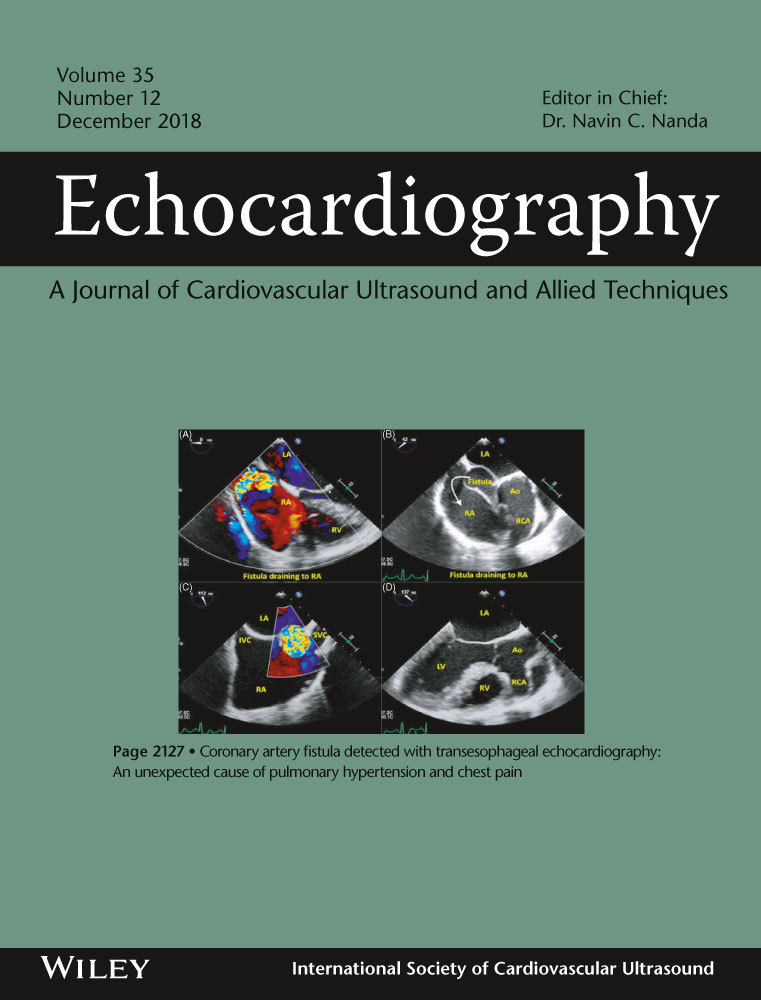Epicardial fat thickness: A new predictor of successful electrical cardioversion and atrial fibrillation recurrence
Abstract
Objective
In recent years, epicardial fat tissue (EFT) has been found to be strongly associated with the development of atrial fibrillation (AF) and post-ablation long-term recurrence. The current study investigated the procedural success rate of electrical cardioversion (ECV) and potential predictors of treatment failure in patients with nonvalvular persistent AF.
Methods
A total of 262 nonvalvular persistent AF patients who were scheduled for elective ECV were included in this prospective study. Routine transthoracic echocardiography was performed before the procedure and EFT thickness was measured. The presence of left atrial appendage thrombus was evaluated by transesophageal echocardiography. The patients were followed up for 6 months to examine any recurrence after ECV.
Results
The success rate of ECV was 85% and the recurrence rate was 35% during the 6-month follow-up period. The mean EFT thickness was 8.67 ± 1.2 mm in the persistent AF group with unsuccessful ECV and 6.81 ± 0.8 in the patients in whom sinus rhythm (SR) was maintained, the EFT was significantly thicker in the AF group (P = 0.001). EFT (P = 0.001) and left ventricular end-diastolic diameters (LVEDD) (P = 0.001) were significantly different between those who had maintained SR and those with recurrent AF during the 6-month follow-up period after ECV. In the multiple logistic regression analysis, LVEDD (odds ratio [OR]: 1.320 (1.023–1.703 95% confidence interval [CI]), P = 0.032)] and EFT [OR: 3.029 (1.013–9.055 95% CI), P = 0.047)] were identified as independent predictors of successful ECV.
Conclusion
Epicardial fat tissue thickness can be effectively used for the prediction of successful ECV and AF recurrence during follow-up in AF patients.




